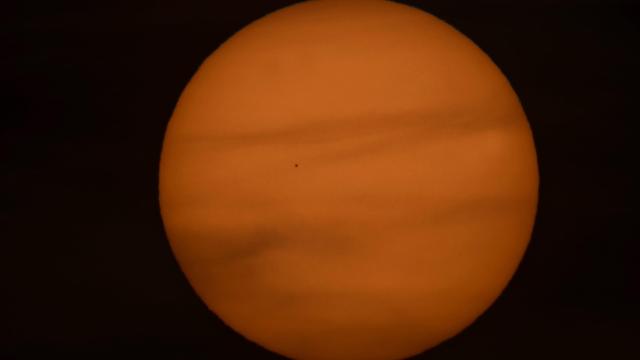With all of the celestial events coming soon, we can safely rebrand the next few months Big Planet Season. All of this year’s supermoons have come and gone, but the cosmic gifts dotting the calendar are a bit more mysterious and striking than the moon: Some of the solar system’s biggest and most distant planets will become visible to the naked eye.
One planet that will carve out prominent real estate in the early morning and night skies during July is Mercury. You’ll be able to track the smallest planet in our solar system for the majority of the month as it drifts to the right of a waning crescent moon and becomes prominent for two days in the east-northeast horizon. It’ll be a fun exercise to track the planet’s journey, but please, do not tell your friends that Mercury is in retrograde — because it’s not!
How to see Mercury this July
The planet will become visible on July 1 in the early morning sky, an hour before sunrise, but it isn’t until July 4 (July 5 in Australia) that Mercury will undergo its greatest elongation (or furthest separation from the sun). This is a significant event, largely because Mercury is the closest planet to the sun, but its distance relative to the gaseous orb doesn’t really affect its visibility to onlookers on Earth.
As NASA notes, the planet will eventually drift “nine degrees below the waning crescent moon” in the very early morning of July 7. Per the space agency, it “will rise after the moon in the east-northeast, just 12 minutes before morning twilight begins.” The moon will then move in such a way that Mercury appears “4 degrees to the right of the waning crescent moon low on the horizon in the east-northeast” on July 8, again.
July 10 and 11 is when Mercury will be at its highest above the east-northeastern horizon, perhaps giving stargazers the best chance of catching a glimpse of the Swift Planet. Catching Mercury at the optimal time is something of a matter of opinion; The BBC’s Sky at Night Magazine contends that July 15, just an hour before sunrise might be your best bet. There is unanimous consensus about when the planet’s visibility will fade, however, as it’s expected to drift beyond the horizon by July 18.
How to identify Mercury
The planet should appear faint, albeit still identifiable with the naked eye, though binoculars or a telescope is preferable for a more memorable glimpse. As Space.com notes, “there must be a clear, unobstructed horizon” when you’re trying to see the planet. “Mercury usually appears as a bright ‘star’ with a yellowish or ochre hue.”
Keep your eye on the moon as an anchor, and either look above or to the right for your best chance to see the planet, depending upon the day. And make sure to keep your early morning calendar open, as there’s more stargazing events on the (literal) horizon.

Leave a Reply
You must be logged in to post a comment.